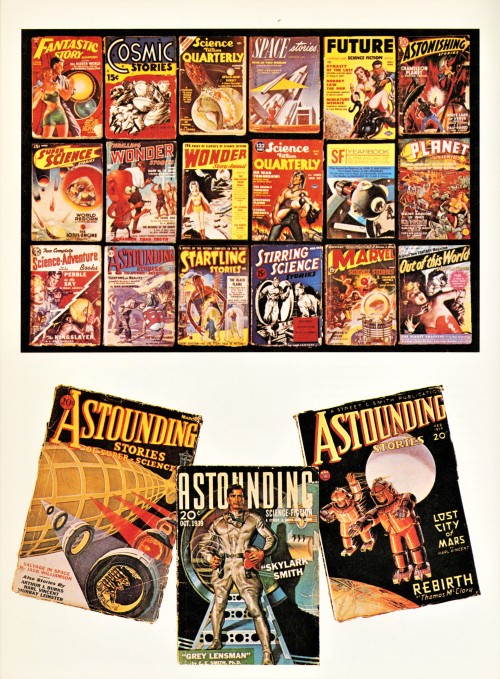#david kyle
Science (Fiction) Saturday
This week, we present images from A Pictorial History of Science Fiction, by Science Fiction fan, writer, and publisher David Kyle, first published in 1976 by Hamlyn of London. It was typeset by Filmtype Services Ltd. of Scarborough, England, and printed in England by Sackville Press Billericay Ltd. Our copy is a second printing from 1977.
Kyle was the co-founder of Gnome Press with SF editor and publisher Martin Greenberg. Gnome operated from 1948 until 1962, publishing SF heavy hitters like Asimov, Heinlein, and Clark. Along with Sauk City, WI based Arkham House, Gnome was instrumental in demonstrating that there was a market for novel-length science fiction. However, they relied on mail-order sales and their inability to secure wider distribution left them unable to compete when better funded outfits entered the Science Fiction market, starting with Doubleday in 1950.
I remembered that I had set this book aside for a future post when flipping through our facsimile of Dürer’sApocalypse, printed by Eugrammia Press in 1964, so I was delighted to see that Kyle had evoked Dürer in tracing the lineage of science fictional imagery (see image three). While I personally don’t subscribe to the school of thought that characterizes things like theEpic of Gilgamesh, Ovid’sMetamorphoses, or the Sanskrit epic Rāmāyana as examples of early science fiction, I understand the impulses underlying this theory. Much in the way that it can be difficult to untangle early scientific inquiry from mysticism and spiritual exploration, the threads connecting contemporary science fiction to a sense of the fantastical that has existed in literature for millennia is just as strong as the link between SF and the modern scientific method.
See captions for image source information.
For more SF inspired Science Saturdays, check out our posts on our collection of Fantastic andAmazing Stories magazines.
ViewotherScience Saturday posts here.
-Olivia, Special Collections Graduate Intern
Post link










